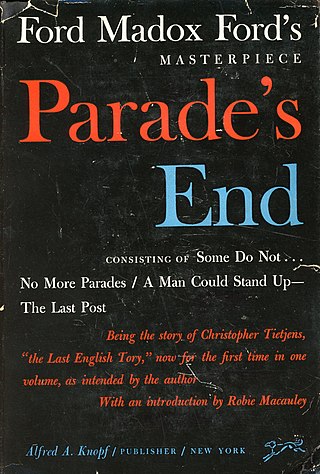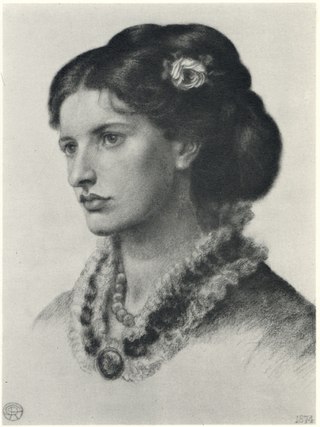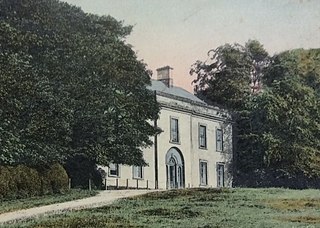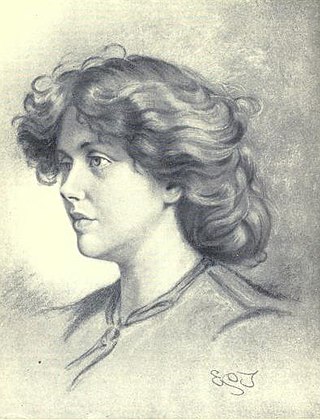Notes
- ↑ The Life and Work of Ford Madox Ford, p. 62;Google Books.
The Square Club for writers was a monthly dining club that met in London, from 1908/9 to about 1913/4, and included many of the established younger-generation authors. The founders included Edward Garnett, G. K. Chesterton and Conal O'Riordan. It was just one of a number of similar London groups (Garnett had another Soho circle that was distinct); it was perhaps the most substantial such grouping of its time, with a concentration of those enjoying professional success. The name was for Mr. Square, the philosopher character in Henry Fielding's Tom Jones .
Others who participated included J. D. Beresford, Walter de la Mare, John Galsworthy, W. H. Hudson, Roger Ingpen, Edgar Jepson, Arthur Machen, John Masefield, and Edward Thomas. Ezra Pound on arriving in London found it easy to make contacts through the club, but less easy to convince those there through his flamboyance. Jepson introduced Ford Madox Ford. [1]

Ford Madox Brown was a British painter of moral and historical subjects, notable for his distinctively graphic and often Hogarthian version of the Pre-Raphaelite style. Arguably, his most notable painting was Work (1852–1865). Brown spent the latter years of his life painting the twelve works known as The Manchester Murals, depicting Mancunian history, for Manchester Town Hall.

Ford Madox Ford was an English novelist, poet, critic and editor whose journals The English Review and The Transatlantic Review were important in the development of early 20th-century English and American literature.

The Pre-Raphaelite Brotherhood was a group of English painters, poets, and art critics, founded in 1848 by William Holman Hunt, John Everett Millais, Dante Gabriel Rossetti, William Michael Rossetti, James Collinson, Frederic George Stephens and Thomas Woolner who formed a seven-member "Brotherhood" modelled in part on the Nazarene movement. The Brotherhood was only ever a loose association and their principles were shared by other artists of the time, including Ford Madox Brown, Arthur Hughes and Marie Spartali Stillman. Later followers of the principles of the Brotherhood included Edward Burne-Jones, William Morris and John William Waterhouse.

Vorticism was a London-based modernist art movement formed in 1914 by the writer and artist Wyndham Lewis. The movement was partially inspired by Cubism and was introduced to the public by means of the publication of the Vorticist manifesto in Blast magazine. Familiar forms of representational art were rejected in favour of a geometric style that tended towards a hard-edged abstraction. Lewis proved unable to harness the talents of his disparate group of avant-garde artists; however, for a brief period Vorticism proved to be an exciting intervention and an artistic riposte to Marinetti's Futurism and the post-impressionism of Roger Fry's Omega Workshops.

Parade's End is a tetralogy of novels by the British novelist and poet Ford Madox Ford, written from 1924 to 1928. The novels chronicle the life of a member of the English gentry before, during and after World War I. The setting is mainly England and the Western Front of the First World War, in which Ford had served as an officer in the Welch Regiment, a life he vividly depicts. The individual novels are Some Do Not ... (1924), No More Parades (1925), A Man Could Stand Up — (1926) and Last Post (1928).

Mathilde Blind, was a German-born English poet, fiction writer, biographer, essayist and critic. In the early 1870s she emerged as a pioneering female aesthete in a mostly male community of artists and writers. By the late 1880s she had become prominent among New Woman writers such as Vernon Lee, Amy Levy, Mona Caird, Olive Schreiner, Rosamund Marriott Watson, and Katharine Tynan. She was praised by Algernon Charles Swinburne, William Michael Rossetti, Amy Levy, Edith Nesbit, Arthur Symons and Arnold Bennett. Her much-discussed poem The Ascent of Man presents a distinctly feminist response to the Darwinian theory of evolution.

Edgar Alfred Jepson was an English author. He largely wrote mainstream adventure and detective fiction, but also supernatural and fantasy stories. He sometimes used the pseudonym R. Edison Page.
Edward William Garnett was an English writer, critic and literary editor, who was instrumental in the publication of D. H. Lawrence's Sons and Lovers.

Isobel Violet Hunt was a British author and literary hostess. She wrote feminist novels. She founded the Women Writers' Suffrage League in 1908 and participated in the founding of International PEN.

Charlotte Mary Wilson was an English Fabian and anarchist who co-founded Freedom newspaper in 1886 with Peter Kropotkin, and edited, published, and largely financed it during its first decade. She remained editor of Freedom until 1895.
The Left Bank and Other Stories is the first collection of short stories and literary debut of Dominican author Jean Rhys. It was first published by Jonathan Cape (London) and Harper & Brothers in 1927, and contained an introduction by Ford Madox Ford. The original subtitle of the collection was "sketches and studies of present-day Bohemian Paris."

William Davis (1812–1873) was an Irish artist, and part of a group of Liverpool based artists who were influenced by the Pre-Raphaelite style of painting.

The Authors' Club is a British membership organisation established as a place where writers could meet and talk. It was founded by the novelist and critic Walter Besant in 1891. It is headquartered at the National Liberal Club.

Georgiana, Lady Burne-Jones was a painter and engraver, and the second oldest of the Macdonald sisters. She was married to Pre-Raphaelite Brotherhood artist Edward Burne-Jones, and was also the mother of painter Philip Burne-Jones, aunt of novelist Rudyard Kipling and Prime Minister Stanley Baldwin, confidante and friend of George Eliot, William Morris, and John Ruskin. She was a Trustee of the South London Gallery and was elected to the parish Council of Rottingdean, near Brighton in Sussex.

The Newton Letter is a 1982 novella by John Banville. Drawing comparisons with Ford Madox Ford's The Good Soldier and John Hawkes's The Blood Oranges for their use of the unreliable narrator, The Newton Letter was described in The New York Times as Banville's "most impressive work to date". Colm Tóibín has stated that the book, among others by Banville, ought to have won the Booker Prize

Lucy Madox Brown Rossetti was a British artist, author, and model associated with the Pre-Raphaelites. She was married to the writer and art critic William Michael Rossetti.

Catherine Madox Brown Hueffer, also known as Cathy, the first child of Ford Madox Brown and Emma Hill, was an artist and model associated with the Pre-Raphaelites and married to the writer Francis Hueffer.

The Good Soldier is a 1981 British television drama film directed by Kevin Billington, starring Robin Ellis, Vickery Turner, Jeremy Brett and Susan Fleetwood. It tells the story of two couples that fall apart due to lies and infidelity. The film is based on the 1915 novel of the same name by Ford Madox Ford. It was produced by Granada Television.

Busby Hall is a Grade II* listed Country House in Little Busby, North Yorkshire, England, close to the village of Carlton-in-Cleveland. The house and parkland sits within the North York Moors National Park.

Juliet Catherine Emma Soskice was an English translator and writer.